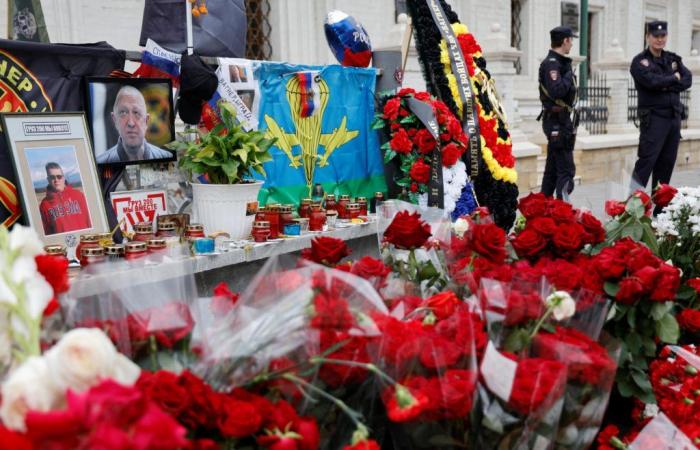A year ago, the Russian mercenary group Wagner rebelled against the Kremlin. A military adventure led by Yevgeny Prigozhin after months of tensions between his group and the Russian military authorities over the conduct of operations in Ukraine. The coup ended after a few days and two months later, Yevgeny Prigozhin disappeared in the crash of his plane. But what remains today of the Wagner group that had embodied Russian ambitions, particularly in Africa?
On August 23, 2023, the Wagner group was decapitated. In the debris of the business plane which crashed shortly after takeoff in the Moscow region, in addition to the remains of Yevgeny Prigozhin, were found the bodies of Dimitri Utkin, his right arm, and Valery Chekakov, head of group logistics. The Prigozhin Empire, which had around 50,000 mercenaries in Ukraine, is no more.
On the Ukrainian front, mercenaries come under the control of RosGardia, Vladimir Putin’s praetorian guard. In Africa, the mercenaries are joining a new firm: Africa Corps, headed by the GRU, Russian military intelligence, but on the continent, the historic ex-Wagners are still very present, says Lou Osborn, analyst from the All Eyes on Wagner research group. in open sources: “ Yes, there are plenty left. In fact, that’s what’s very interesting. The only place where there is a sort of concentration of historical Wagners is in Central Africa. Today, we have someone like Dmitri Sytyi who is still in charge of the activities of historic Wagner in the Central African Republic. And then we see the former commanders who then reappear either in Afrikakorps, or in other paramilitary organizations like Redut for example. ».
Russian military intelligence, the GRU, has control over operations in Africa, but unlike Wagner, a vertical organization, the GRU this time favors intermediaries. “ In Burkina Faso, we were able to identify a unit called the Bears unit. », Lou Osborne, « HAS The basis is a group of volunteer fighters that was created in Crimea and which, as part of the reorganization that was taking place at the time of the Prigozhin mutiny, signed a contract with the Ministry of Defense. And this contract is actually signed with the GRU. The Russian intelligence services seem to go through organizations that have an intermediary existence, in order to organize all of these units and dispatch them here and there. »
Wagner a brand still very popular in Russia
Wagner was also very present in the media and digital influence. In Africa, influence operations were organized by Wagner’s Information and Communication Offices, the BIC offices and there again, for a year, there has been movement points out Lou Osborne ” At the time of the mutiny, the whole part rather traditional media, since Prigogine was at the head of a kind of media consortium, the best known was Ria Fan, all that was closed. On the part rather firm with Trolls, influence operations, they continued after a short break. And then, it started again and we saw, from October 2023, the creation of a new structure called African Initiative, and which today is really the engine of influence in Africa. So these offices, they still exist. Now, who is in charge of these offices? That is the big question. »
The fact remains that the Wagner brand has not completely disappeared. In Russia it is still used as a loss leader, to recruit mercenaries who then serve exclusively the Russian government; the Kremlin especially does not want to see adventurers like Yevgeny Prigozhin emerge.






